First, take a moment to give yourself a big pat on the back—you’ve been working hard to collect your students’ readiness data and now you’re ready to put it to use! The VKRP provides many excellent resources that include strategies for working with individual or groups of students in your classroom. But, before you explore the resources, it is important to examine your classroom’s data reports so that you can select the most appropriate resources to best support your students’ learning.
1. Access your VKRP Reports
You can access your own VKRP reports from the VKRP Landing Page in your PALS account. If you would like a more comprehensive overview of reports before getting started, click on the Training tab on your top navigation bar and select the Reports and Resources: Overview module. You may also refer to pages 19-24 of the VKRP manual.
- Once you have located and are ready to review your classroom’s VKRP reports, we recommend starting with the Classroom Overview.
- This report shows results for your entire classroom across the areas of math, literacy, self-regulation and social skills.
- And, this report is interactive and allows you to navigate to an individual student’s report or to a specific early learning domain such as Geometry.
- It can seem like there are many reports to review—the best way to learn what is most helpful for you and your students is to spend some time exploring in the site. Many schools have set aside PLC time to review reports—see if this is something you can start to do at your school!

2. Look for Patterns in the Data
Now it’s time to think about what you see. And, ask yourself…
What’s happening in the classroom?
- Where are students doing well?
- Where do they need support?
- Is more support needed for the whole classroom or individual students?
What about individual students?
- Do students below benchmark have anything in common?
- Do any stand out as needing more support?
- Why might that be?
At this point in your data exploration, keep your questions grounded in what you notice and wonder about in your reports and in the classroom. For example, a teacher might notice in her reports that 9 of her students are not meeting the overall benchmark in Math—she then wonders if they have anything in common—after exploring the domain math reports, she notices that 5 out of the 9 students are not meeting the Numeracy expectation.
3. Explore your VKRP Resources
After looking at your data, it’s time to take action! VKRP reports include a “Recommended Resources” section based on your classroom’s scores! You can easily access them by just clicking on the resource name. For a more comprehensive overview of the VKRP resources, refer again to the Reports and Resources: Overview training module or to page 25 of the VKRP manual.

Based on your data exploration discussed above – you are likely asking yourself: What can I do to support my classroom as a whole? What can I do for individual students?
Action Plans are great ways to plan and track the effectiveness of supports that you are providing to individual students or groups of students. Below is an example of a completed Action Plan using the scenario above of the teacher who noticed that 5 of her students were not meeting the Numeracy expectation.
Action Plan
Planned change: (What will I do? And with which student or students?)
| Why am I planning to do this? (What evidence supports this decision? What do I hope will happen as a result of this change in my practice?) | How will I initiate this change? (What am I going to do? What steps will I take and when will I take them?) | What supports do I need to be successful? (Who can help and what do I need from them?) | How will I know if I’ve made progress? (What evidence will I review? How will I document my own growth? Improvements in student learning?) |
| 5 of my students are not meeting the Numeracy expectation. I hope that with additional supports, these students will meet or be closer to the numeracy skills of their peers. | Explore the VKRP Numeracy resources. Identify classroom activities that are appropriate for small groups of students. Plan for a time when these 5 students can work in a small group. | My teacher aide can work with this small group of students during math centers. | Regularly check in with these students during small group activities and assess their numeracy skills—for example, “show me how high you can count!” |
TEASER!
Keep your eyes open for the next blog that will focus on how to best share the VKRP data with your students’ caregivers and ways to encourage caregivers to support their child’s early learning at home. In this blog we will feature several fun and interactive apps for enhancing caregiver-teacher communication!
More questions? VKRP provides support via the online chat feature when you are in the system, via email vkrp@virginia.edu, and via toll free 866-301-8278 ext. 1

